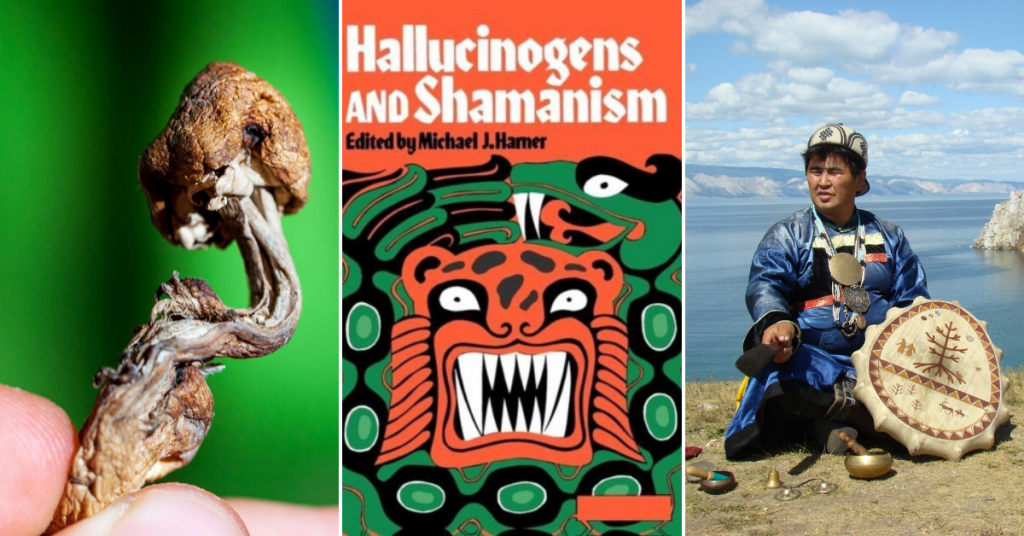The Healing Journey: new approaches to consciousness
“In this remarkable boo k, Chilean-American psychiatrist Claudio Naranjo takes us on a scientific adventure through his groundbreaking research into new experiential methods of psychotherapy facilitated by psychedelic substances. The Healing Journey reveals these consciousness-expanding compounds to be fascinating therapeutic tools that are now—40 years after the original publication—gaining wider recognition in Western clinical and academic circles.
k, Chilean-American psychiatrist Claudio Naranjo takes us on a scientific adventure through his groundbreaking research into new experiential methods of psychotherapy facilitated by psychedelic substances. The Healing Journey reveals these consciousness-expanding compounds to be fascinating therapeutic tools that are now—40 years after the original publication—gaining wider recognition in Western clinical and academic circles.
This book takes an in-depth look at the spiritual and psychotherapeutic potential of the amphetamine derivatives MDA and MMDA, harmaline (the active compound in ayahuasca), and ibogaine. To distinguish them from classical psychedelics such as LSD and psilocybin, Naranjo coins the terms “emotion-enhancers” and “fantasy-enhancers” for these substances.
This book is a must-read for all serious students of consciousness and the human psyche, and for those with a personal or professional desire to explore revolutionary innovations in psychotherapy, psychopharmacology, experimental psychiatry, or the psychology of religion. The exceptional clarity of Naranjo’s book also makes it an important resource for any intelligent layperson seeking information to guide them in their own search for spiritual growth and self-exploration.”
–Stanislav Grof, author of LSD Psychotherapy
The Healing Journey: New Approaches to Consciousness, door Claudio Naranjo, Pantheon Books, 235 pagina’s.
Koop dit boek via MAPS en steun daarmee psychedelisch onderzoek
The Healing Journey: new approaches to consciousness Read More »

 Anthropologists have long been fascinated by the worldview and religious beliefs of primitive peoples. Only recently, however, with the surge of interest in hallucinogenic agents in our own culture, have researchers begun to acknowledge the essential role of such substances in the cosmology of many of these primitive societies. In this unusual collection, ten original studies explore the use of hallucinogens in shamanism: the ancient and widespread practice of invoking a trance state to perceive and manipulate supernatural forces.
Anthropologists have long been fascinated by the worldview and religious beliefs of primitive peoples. Only recently, however, with the surge of interest in hallucinogenic agents in our own culture, have researchers begun to acknowledge the essential role of such substances in the cosmology of many of these primitive societies. In this unusual collection, ten original studies explore the use of hallucinogens in shamanism: the ancient and widespread practice of invoking a trance state to perceive and manipulate supernatural forces.
 Dr. Sidney Cohen tells with precision and restraint the story of the most interesting among them, LSD, in this book. He has long worked with the drug under hospital conditions and is aware both of its possibilities and its drawbacks. He gives many detailed accounts of LSD feelings in different subjects, and they are fascinating and colorful. He indicates the uses and possible uses of LSD in tapping the unconscious or the abnormal mind, and the usefulness of this for therapists. He discusses LSD in terms of “model psychosis” or “instant Zen.” He treats mystical experiences and visions in terms of what we have learned from these drugs. In a fascinating chapter he discusses hallucinogens for possible war use—they have been considered as incapacitating agents that might limit lethal warfare—and he shows how they too would lead to death. “A pill does not construct character, educate the emotions, or improve intelligence,” writes Dr. Cohen. “It is not a spiritual labor-saving device, salvation, instant wisdom, or a shortcut to maturity. However, it can be an opportunity to experience oneself and the world in a new way—and to learn from it. “The book is free of medical jargon. It tells thestory of LSD—which is full of brilliant color andbright new deep perception—trying to keep the experience intact. We all live in a world of sensation, and it is sensation itself that is illuminated here. Dr. Cohen explores LSD as a possible gateway to the vastness within.
Dr. Sidney Cohen tells with precision and restraint the story of the most interesting among them, LSD, in this book. He has long worked with the drug under hospital conditions and is aware both of its possibilities and its drawbacks. He gives many detailed accounts of LSD feelings in different subjects, and they are fascinating and colorful. He indicates the uses and possible uses of LSD in tapping the unconscious or the abnormal mind, and the usefulness of this for therapists. He discusses LSD in terms of “model psychosis” or “instant Zen.” He treats mystical experiences and visions in terms of what we have learned from these drugs. In a fascinating chapter he discusses hallucinogens for possible war use—they have been considered as incapacitating agents that might limit lethal warfare—and he shows how they too would lead to death. “A pill does not construct character, educate the emotions, or improve intelligence,” writes Dr. Cohen. “It is not a spiritual labor-saving device, salvation, instant wisdom, or a shortcut to maturity. However, it can be an opportunity to experience oneself and the world in a new way—and to learn from it. “The book is free of medical jargon. It tells thestory of LSD—which is full of brilliant color andbright new deep perception—trying to keep the experience intact. We all live in a world of sensation, and it is sensation itself that is illuminated here. Dr. Cohen explores LSD as a possible gateway to the vastness within.